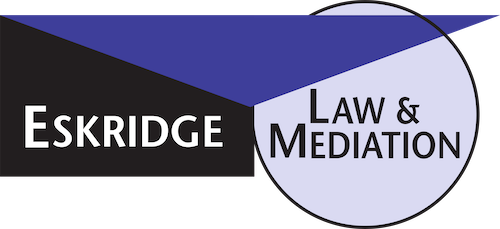August 17, 2018
On June 14, 2017, a Los Angeles County jury awarded $17.4 million to a Los Angeles sanitation worker for discrimination and harassment he suffered in the workplace because he was perceived as gay. Among other things, his supervisors circulated Photoshopped portraits of the worker (who is married to a female) showing him in a same-sex relationship with a co-worker. When he complained about the harassment, he was accused of falsifying time documents and was fired. After filing a complaint with the L.A. Board of Civil Service Commission, he was eventually reinstated to his job but was assigned to a lower-paying shift, was given a supervisor who had circulated the Photoshopped pictures of him to his co-workers, and was faced with more bogus accusations of misconduct. He ended up on permanent disability for medical issues caused by the harassment. [See www.latimes.com/local/lanow/la-me-ln-city-discrimination-verdict-20170615-story.html.]
California’s Fair Employment and Housing Act (“FEHA”) has for many years prohibited discrimination and harassment by an employer against an employee based on actual or perceived sexual orientation. [Gov. Code §§ 12920 and 12940(a); Taylor v. Nabors Drilling USA, LP (2014) 222 Cal.App.4th 1228, 1229.] The perception can be either that the person (1) has a certain sexual orientation, or (2) is associated with someone who has or is perceived to have that sexual orientation. [Gov. Code §12926(o).] “Sexual orientation” includes heterosexuality, homosexuality, and bisexuality. [Gov. Code §12926(s).]
Employment discrimination occurs when someone in the workplace (“Employer”) treats different employees differently on the basis of a protected category while performing acts that are part of Employer’s job. Harassment occurs when Employer mistreats an employee based on a protected category in a way that falls outside of Employer’s job description.
As a matter of public policy, the FEHA recognizes the need to protect the right and opportunity of all persons to seek, obtain, and hold employment free from discrimination, harassment, and retaliation. [Gov. Code §§ 12920 and 12940(g) – (k).] The FEHA also prohibits retaliation by an employer against an employee for complaining about discrimination and/or harassment based on sexual orientation.
The Employer’s Duty: An employer has an affirmative and mandatory duty to prevent harassment and discrimination. [Gov. Code §12940(k).] Prompt investigation of a discrimination or harassment claim is necessary for an employer to meet its obligation of ensuring a discrimination-free work environment. [Metters v. Ralphs Grocery Co. (2008) 161 Cal.App. 4th 696.]
The Employee’s Burden: In most sexual orientation discrimination claims, the employee must prove that, because of sexual orientation, the employer deliberately treated that employee worse than other employees. In assessing whether the employee was treated worse, the court will consider the employer’s actions regarding the employee’s compensation, or the terms, conditions, or privileges of employment. [Gov. Code § 12940(a); Yanowitz v. L’Oreal (2005) 36 Cal.4th 1028.]
An employee can prove an employer’s discriminatory intent by using either direct or circumstantial evidence. [McDonnell Douglas Corp. v. Green (1973) 411 U.S. 792.] Direct evidence of discrimination may include derogatory remarks about the sexual orientation of an employee (or that of someone with whom the employee associates), or conduct creating a hostile or abusive work environment because of the sexual orientation of an employee (or someone with whom the employee associates). [Hope v. California Youth Authority (2005) 134 Cal.App.4th 577, 588 – 590.]
Unlike the Los Angeles case mentioned at the top of this article, in most cases an employee will not have direct evidence of the employer’s discriminatory intent. In those cases, the employee must rely on circumstantial evidence of intent and any inferences that may be drawn therefrom. [Caldwell v. Paramount Unified School Dist. (1995) 41 Cal.App.4th 189, 195; Guz v. Bechtel National, Inc. (2000) 24 Cal.4th 317, 354 – 356.] An example of circumstantial evidence would be where the employee, though qualified for the job and performing adequately, was discharged, suspended, demoted, or unfairly disciplined, while others in similar jobs (who were not regarded as being of the same sexual orientation) were not.
Procedure in Filing Claims: The FEHA sets out detailed procedures that must be followed when seeking a remedy for an unlawful employment practice. Before filing a claim for discrimination or harassment, an employee must exhaust all available administrative remedies by filing a charge of discrimination and harassment with the California Department of Fair Employment & Housing (“DFEH”). [Gov. Code § 12960; Martin v. Lockheed Missiles & Space Co. (1994) 29 Cal.App.4th 1718, 1724.] Be aware that you have only one year from the time of the discriminatory action to file a complaint.
Federal employment law: The above discussion addresses only California’s state-wide laws, not federal employment law such as Title VII of the federal Civil Rights Act of 1964 (“Title VII”). Title VII specifies “sex” but not “sexual orientation” as a protected class. The federal courts still struggle to reconcile Title VII’s reference to “sex” discrimination with cases involving sexual orientation discrimination, with no clear consensus.
Early this year, the Second and Seventh Circuits of the U.S. Courts of Appeal made landmark rulings that Title VII does prohibit discrimination in employment on the basis of sexual orientation. [Zarda v. Altitude Express (2d. Cir. 2018) 833 F.3d 100; Hively v. Ivy Tech Community College (7th Cir. 2018) 853 F.3d 339.] The Ninth Circuit, which encompasses California, ruled similarly long ago. [See Rene v. MGM Grand Hotel, Inc. (9th Cir. 2002) 305 F.3d 1061.] Other circuit courts, however, have ruled otherwise. The U.S. Supreme Court has not resolved this conflict among the circuits, so the future of sexual orientation protection in federal employment law is unknown.
Need more information?
ESKRIDGE LAW may be contacted by phone (310/303-3951), by fax (310/303-3952) or by email (geskridge@eskridgelaw.net). Please visit our website at eskridge.hv-dev.com.
This article is based on the law as of the date posted at the top of the article. This article does not constitute the provision of legal advice, and does not by itself create an attorney-client relationship with Eskridge Law.
